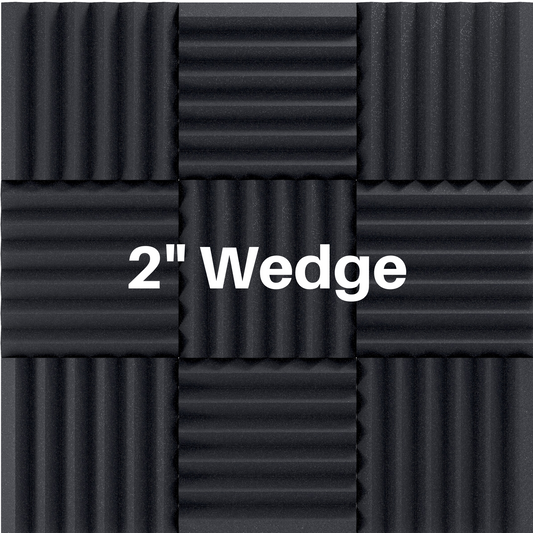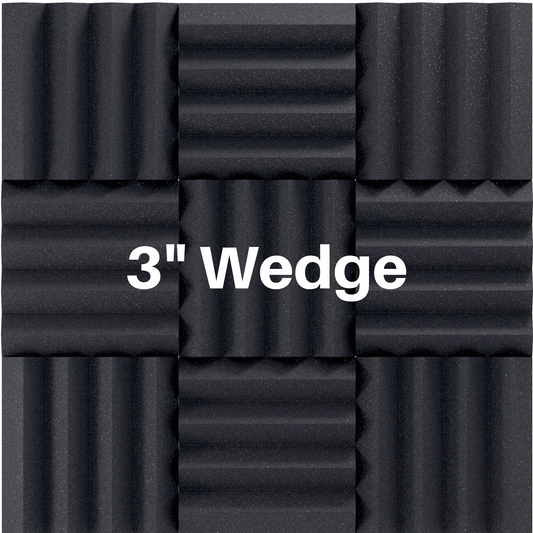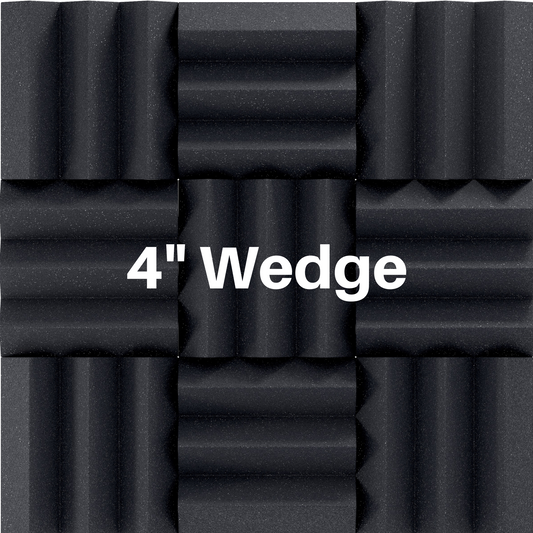What is the Human Voice Frequency? How Sound is Produced by the Human Body
Share
What is the human voice frequency?
Why is each persons voice so unique?This is a question that has been asked for centuries. Scientists and researchers have worked tirelessly to figure out what makes each person's voice special.
Let's explore what the human voice frequency is and how sound is produced by your vocal cords.
Some people have higher frequency in their voices and some people have lower, more baritone voices. A high-frequency range can be from a few hundred hertz up to several thousand hertz.
The fundamental frequency of a persons complex speech tone lies in the range of 100-120 Hz for lower sounding voices, but variations outside this range can occur. For higher pitched voices the fundamental frequency can be an octave higher around 200 Hz. Children can produce a fundamental voice frequency as high as 300 Hz.
The fundamental frequency of a human voice can also be known as the pitch, or f0.
The below charts show what SPL is produced at each frequency band for various inflections of low, high, and children voices. The SPL is basically how loud the sound is. The higher on the chart the louder the sound.
Low Human Voices

High Human Voices

Children Voices

Keep in mind that the human ear cannot hear sounds above 20 kHz (20 kilohertz). This is why dogs and other animals can hear higher pitched sounds than humans.
How does the human voice produce sound?
The vocal cords are located in your throat. When you speak, air passes through your vocal cords and causes them to vibrate. This vibration creates sound waves that travel through the air and into your ears, where they are perceived as sound.
The vocal cords are also known as vocal folds which is the more modern term. Your vocal folds need to vibrate symmetrically and in regularly in order to get crisp and clear sound that is not raspy or harsh.
Fun facts about the human voice!
Countertenors: Some males possess a rare vocal ability to sing in the alto or soprano range, and they are known as countertenors.
Whistle Register: The highest register in the human voice is known as the whistle register, and it allows some individuals to produce extremely high-pitched sounds.
Vocal Classification: Singers are typically classified into vocal categories like soprano, alto, tenor, and bass based on their vocal range and timbre.
Vocal Range Expansions: With proper vocal training, singers can expand their vocal range and improve their ability to hit higher or lower notes. Don't get down on yourself if you can't hit those high notes in the shower. There is always hope ;)
Vocal Health: Maintaining good vocal health through proper hydration, rest, and avoiding vocal strain is essential for preserving and enhancing the human vocal range.
Chart Of Frequencies Produced By People With Lower Voices
| Freaquency [HZ] | Shouted | Loud | Raised | Normal | Casual |
| 125 | 42 | 50 | 51 | 48 | 44 |
| 160 | 42 | 55 | 49 | 44 | 42 |
| 200 | 58 | 58 | 52 | 48 | 45 |
| 250 | 67 | 60 | 55 | 52 | 44 |
| 315 | 68 | 61 | 54 | 51 | 43 |
| 400 | 69 | 65 | 58 | 53 | 47 |
| 500 | 74 | 68 | 60 | 54 | 48 |
| 630 | 78 | 69 | 58 | 52 | 45 |
| 800 | 78 | 65 | 54 | 46 | 38 |
| 1000 | 78 | 64 | 53 | 45 | 37 |
| 1250 | 80 | 66 | 54 | 47 | 39 |
| 1600 | 78 | 63 | 51 | 43 | 39 |
| 2000 | 73 | 59 | 48 | 40 | 34 |
| 2500 | 72 | 59 | 48 | 41 | 33 |
| 3150 | 70 | 57 | 47 | 41 | 33 |
| 4000 | 68 | 55 | 44 | 38 | 35 |
| 5000 | 62 | 49 | 40 | 34 | 34 |
| 6300 | 61 | 48 | 41 | 35 | 33 |
| 8000 | 59 | 46 | 39 | 33 | 33 |
Chart Of Frequencies Produced By People With Higher Voices
| Freaquency [HZ] | Shouted | Loud | Raised | Normal | Casual |
| 125 | 20 | 20 | 26 | 20 | 26 |
| 160 | 30 | 35 | 35 | 37 | 36 |
| 200 | 40 | 45 | 48 | 48 | 46 |
| 250 | 50 | 55 | 53 | 47 | 43 |
| 315 | 55 | 55 | 49 | 43 | 40 |
| 400 | 61 | 55 | 53 | 49 | 45 |
| 500 | 64 | 59 | 57 | 50 | 45 |
| 630 | 67 | 62 | 55 | 48 | 44 |
| 800 | 70 | 62 | 54 | 46 | 39 |
| 1000 | 72 | 61 | 52 | 42 | 35 |
| 1250 | 74 | 62 | 53 | 43 | 35 |
| 1600 | 74 | 62 | 52 | 42 | 35 |
| 2000 | 69 | 56 | 47 | 38 | 34 |
| 2500 | 66 | 54 | 45 | 36 | 31 |
| 3150 | 66 | 53 | 45 | 38 | 30 |
| 4000 | 65 | 53 | 45 | 40 | 30 |
| 5000 | 60 | 49 | 42 | 36 | 30 |
| 6300 | 56 | 47 | 40 | 36 | 32 |
| 8000 | 55 | 45 | 39 | 34 | 33 |
Chart Of Frequencies Produced By Children's Voices
| Freaquency [HZ] | Shouted | Loud | Raised | Normal | Casual |
| 125 | 25 | 25 | 26 | 26 | 24 |
| 160 | 45 | 30 | 30 | 30 | 26 |
| 200 | 44 | 42 | 41 | 40 | 41 |
| 250 | 49 | 49 | 52 | 51 | 46 |
| 315 | 53 | 54 | 54 | 48 | 40 |
| 400 | 61 | 58 | 53 | 48 | 43 |
| 500 | 66 | 60 | 55 | 53 | 49 |
| 630 | 66 | 60 | 58 | 52 | 48 |
| 800 | 67 | 63 | 57 | 49 | 44 |
| 1000 | 72 | 61 | 54 | 44 | 39 |
| 1250 | 72 | 62 | 54 | 43 | 38 |
| 1600 | 72 | 63 | 54 | 43 | 39 |
| 2000 | 71 | 60 | 50 | 41 | 39 |
| 2500 | 65 | 54 | 47 | 38 | 33 |
| 3150 | 66 | 54 | 48 | 39 | 33 |
| 4000 | 66 | 54 | 49 | 40 | 33 |
| 5000 | 63 | 52 | 46 | 38 | 33 |
| 6300 | 67 | 49 | 43 | 35 | 33 |
| 8000 | 55 | 48 | 43 | 37 | 33 |





3 comments
Really nice charts! What is the distance of to the source (voice) to the specified SPL? 1m?
more info
Love to know more about voice and frequency